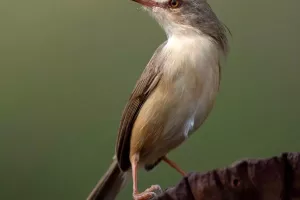The giant panda, as a national treasure of China, has always attracted worldwide attention. The giant panda is the only mammal belonging to the giant panda genus. The giant panda has a very cute appearance: black and white body color, round cheeks, big "dark circles", chubby body, sharp claws, and the iconic walking style of the inner eight characters. Adult giant pandas generally weigh 80-120 kilograms, with a maximum weight of 180 kilograms.
Giant pandas mainly inhabit deciduous broad-leaved forests, mixed coniferous and broad-leaved forests, and mountain bamboo forests in subalpine coniferous forest belts between 1400-3600 meters above sea level.The area where they are active is the gentle slope terrain below 20°, mostly in valleys, mountainside depressions, river valley terraces, etc.These places have lush forests, good bamboo growth, relatively stable temperatures, and good sheltering conditions. Moreover, these places are often rich in food resources and water sources. The climate is cool and humid, and the humidity is often above 80%, which is very suitable for giant pandas to live.
Let's take a look at the behavioral characteristics of giant pandas.
Giant pandas spend half their time eating every day, and most of the remaining half time is spent in sleep. In the wild, pandas sleep for 2-4 hours between each feeding. Lying on their backs, on their sides, stretched out, or rolled into a ball are their preferred sleeping styles.At the zoo, the keepers feed them twice a day, so the pandas rest for the rest of the day.Pandas look cute even when they are sleeping. They are very flexible and can move their bulky bodies into a variety of positions. Their favorite position is to sleep with their legs propped up in a tree and their eyes covered with their hands.
To the giant panda population, visible signals are meaningless to them. The round face of the giant panda lacks expression, the tail is short, and the ears can be erected but not flexible enough. This is all because pandas live in misty bamboo forests on high mountains all year round, so they can't see each other. Most communication between pandas takes place through scent markers left in their habitat. When pandas want to meet, usually during the estrus season, they find each other by scent markings.Once they meet, they switch to communicating by voice. Giant pandas rely on their rich "language" to express emotions ranging from passionate to angry.
Most people think giant pandas are cute and docile animals, but in fact giant pandas are aggressive. The teeth and claws of giant pandas are very sharp, and the musculature of the limbs and jaws are also very developed. They can hurt each other, especially as male pandas establish their dominance and compete for females. However, incidents of giant pandas attacking humans are relatively rare.
The giant pandas you see in the zoo, they seem to be eating bamboo most of the day and seem to live a carefree life. It is also inevitable that people will have the misunderstanding of giant pandas being lazy and gluttonous. But the fact is that pandas don't hibernate as long as other bears in temperate regions, because they can't store body fat, so they have to constantly search for food.


